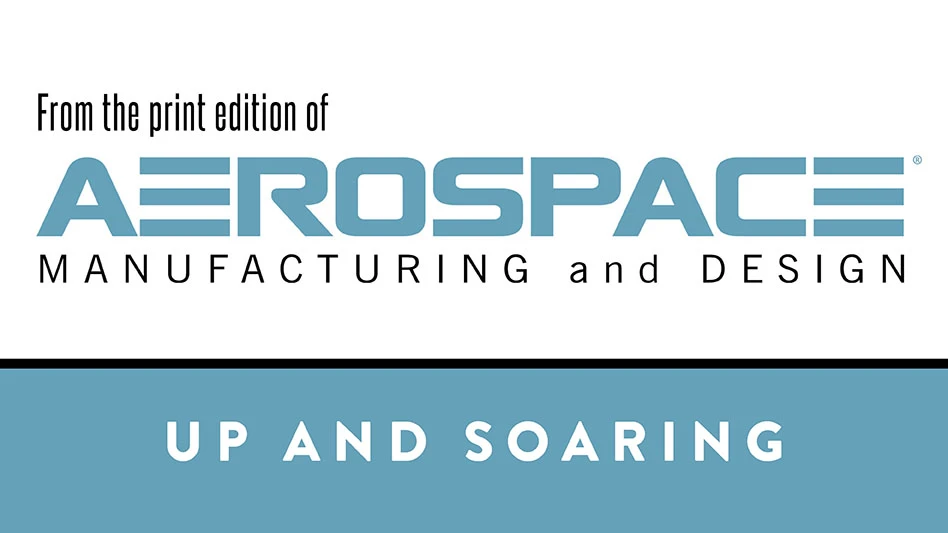 The movie Top Gun has a few technical errors in it. In real life, throttles go forward to increase power and back to reduce it. In the film, Maverick gets his controls mixed up a couple of times. These technical errors might not matter in the film industry, but in aerospace manufacturing, everything needs to be painstakingly precise to ensure safety and reliability.
The movie Top Gun has a few technical errors in it. In real life, throttles go forward to increase power and back to reduce it. In the film, Maverick gets his controls mixed up a couple of times. These technical errors might not matter in the film industry, but in aerospace manufacturing, everything needs to be painstakingly precise to ensure safety and reliability.
High hopes
The aerospace industry is growing quickly, partly due to the increasing number of commercial flight operators and partly as the result of the cutting-edge research and development in the defense and aerospace sector.
Europe’s aerospace and defense industries have a turnover of just above 186 billion euros, ($220 billion) representing 1% of the European Union’s GDP. The sector employs more than 750,000 people and is crucial for maintaining Europe’s technological leadership. To support further development of the sector, the EU has recently launched the Horizon 2020 initiative, which makes more than 70 billion euros ($82.9 billion) available for research and development, including in the aerospace sector.
British defense companies turned over £22 billion ($33.3 billion) last year and account for 22% of the global defense export market. In addition, Britain’s commercial aerospace sector is an even more successful exporter, with 90% of the sector’s £28 billion ($42.34 billion) turnover coming from exports.
Historically, the aerospace sector has been dominated by Western countries, and the United States and the United Kingdom are still the biggest manufacturers and developers in the industry. However, the race for aerospace supremacy is hardly a predictable one. In the next 20 years, world annual passenger traffic is expected to grow at a rate of 4.7% per year, fueled by the Asia-Pacific region, which has an overall growth of 7.3% per year. This sustained expansion suggests that countries such as Malaysia, Russia, and China will grow their influence in the sector in upcoming years.
Automation is key
Aerospace manufacturers have to pick up their game to face the pressures of an increasingly global market, tight competition, and unyielding standards. The move from stand-alone machining centers to horizontal machining centers in automated cells frees up labor, maximizes manufacturing flexibility, and increases efficiency.
Reducing the cutting time by a few minutes can result in a significant efficiency boost and much welcomed cost reduction.
Manufacturers using horizontal machining centers with a chip control capability and rotating pallet control can minimize cutting and part-handling time. Intelligent automation solutions can increase the flexibility of the process, allowing the same machining system to work on different types of components, ensuring better control of the workflow and a much faster production rate.
Apart from higher capacity, the competitive advantages of automation include improved workflow management, just-in-time delivery, and highly precise manufacturing.
Precision and traceability safety
Highly precise manufacturing and the traceability of components are crucial for ensuring the functional safety of aircraft. Concessions or oversights are unacceptable in aerospace, which is why supervisory bodies and quality management systems such as the European Aviation Safety Agency (EASA) and AS9100 play an essential role for manufacturers around the world.
Every component manufactured for the aerospace sector needs to be highly precise – from the most critical engine parts to smoke detectors – to safeguard equipment, crew, and passengers. Working with authorized suppliers that ensure the traceability of components guarantees safety requirements are met.
Prolong equipment life, reduce costs
Although most companies regard upgrading to the next generation of automation equipment and robots as a desirable objective, few have a budget for such a colossal initiative. One trick for reducing manufacturing costs without compromising on quality standards is to prolong the life of existing equipment. If a piece of equipment breaks down, you might not need to purchase a brand new one. The answer could be replacing one specific part, such as a motor or a drive, to get the machine working again. Working with professional, authorized suppliers can reduce downtime and manufacturing costs, while ensuring quality standards don’t slip.
Unlike Hollywood blockbusters, where pretty much anything goes, the aerospace industry is a particularly demanding and strict environment, in which success is unattainable without highly precise manufacturing and reliable suppliers.
European Automation
www.euautomation.com
About the author: Jonathan Wilkins is the marketing manager of industrial automation components supplier European Automation, and can be reached at jonathan.wilkins@euautomation.com or +44 (0) 845.521.3088.

Explore the January February 2015 Issue
Check out more from this issue and find your next story to read.
Latest from Aerospace Manufacturing and Design
- America Makes announces QTIME project call
- Innovation meets precision for 40% faster machining
- Upcoming webinar: Pro tips from a supply chain strategist
- Heart Aerospace relocates to Los Angeles
- Fixtureworks introduces Stablelock Clamps
- Piasecki acquires Kaman's KARGO UAV program
- PI Americas’ long-travel XY piezo nanopositioners-scanners
- AAMI project call submission deadline extended to May 12





